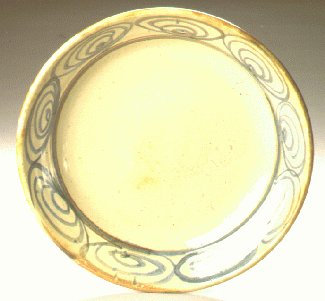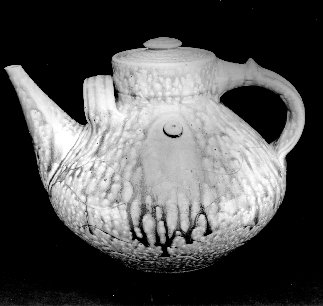Jane HerroldI throw on a kick wheel with rather soft clay, and do as much slipping and glazing as possible while the pots are leather-hard. This way I can scratch through glaze as well as slip, and avoid the deadly bisque stage. I single-fire (to cone 9/10) with wood in a round, beehive kiln. I almost always work in series, and am still amazed, after twenty years of potting, by the subtleties that make one mug better than another. | 
|

|
Mark HewittWhen I look at old North Carolina pots and when making my own, I do so with eyes that are not southern, eyes that instead reflect a sensibility learned during my childhood and deepened during my early experiences as a potter in England. From my father and grandfather I have inherited a deeply ingrained sense of the breadth and complexity of ceramic culture. However, the way I look at pots now, and the sense of quality I have developed about pots, stems from the time I spent working with Michael Cardew in Cornwall.
Every clay has a feel, a quality like the cut of different cloth. This quality can vary from the seductive satin of porcelain to the cozy flannel of earthenware. North Carolina's stoneware clays have the relaxed, purposeful, and unassuming quality of denim overalls. They can be clean and elegant but are prone to being unkempt and scruffy, even a little wild. Old pots made with clays that the potters themselves have dug and simply refined are vibrant to the touch, warm to the eye, and possess an elaborate microaesthetic that rewards attentive inspection. Clay has meaning and value beyond its physical properties; clay is a clue. |